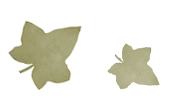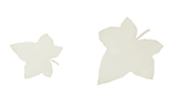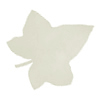


|
I
told the new apprentice we were having lamb's quarters
for dinner. Whatever you call it, Chenopodium album and its
edible sisters - there are dozens of useful species
- is a versatile weed that offers incredible amounts
of nourishment to those who harvest it instead of
cursing it. It is one of the most widely distributed
plants in the world, tolerant of poor soils, high
altitudes, and minimal rainfall. Global warming
is just fine with lamb's quarters. In higher concentrations
of carbon dioxide, it grows almost double in size.
And that's good news for those who are in the know
about its benefits. The young, tender leaves of
lamb's quarter are tasty in salads. The older leaves,
stripped from their stalks and cooked in a small
amount of water for thirty minutes or more, are
a rich and tasty bone-building green. Left to mature,
lamb's quarter plants produce copious amount of
protein-rich seeds which are easy to harvest and
use. The roots are used as medicine. In North America, Blackfoot Indians used the seeds
as early as 1500CE, while both lamb's quarter greens
and the seeds are firmly embedded in the cultures
and meals of the Navajo, the Pueblo, all the tribes
of Arizona, the Diggers of California, and the Iroquois.
In South America several tamed wild goosefoots have
been created: Chenopodium quinoa and canahua for
their nutritious seeds; huauzoutte for its delicious
greens. Green blessings are all around you. And a gardener's best revenge is to eat the weeds, especially lamb's quarter. Recipes Herb Salt Lamb's quarter leaves are so mineral-rich that they can be used alone as a salt substitute. But adding aromatic herbs enlivens the taste. Adding seaweed not only makes this herb salt salty, it increases the nutritive benefits. 1 part dried lamb's quarter leaves Gently toast seaweed in a cast iron skillet until very crisp. Grind each herb in a coffee mill while seaweed cools. Then grind seaweed and combine with ground herbs. Store in a shaker. Zuni Steamed Dumplings From Carolyn Niethammer's American Indian Food and Lore (c. 1974). An easy and delicious wild food addition to any casserole, stew or soup. Combine 1/2 cup cold water and 1/2 cup cornmeal with 1/2 teaspoon salt. Add slowly to 1 1/2 cups boiling water. Cover and thicken over low heat. Remove from heat and add 1/2 cup ground lamb's quarter seeds. Form into small balls. Place on a rack over boiling water and steam for 15-20 minutes, or until done. Add to a casserole, stew, or soup and cook gently for another half hour before serving. Legal Disclaimer: This content is not intended to replace conventional medical treatment. Any suggestions made and all herbs listed are not intended to diagnose, treat, cure or prevent any disease, condition or symptom. Personal directions and use should be provided by a clinical herbalist or other qualified healthcare practitioner with a specific formula for you. All material on this website/email is provided for general information purposes only and should not be considered medical advice or consultation. Contact a reputable healthcare practitioner if you are in need of medical care. Exercise self-empowerment by seeking a second opinion. Susun Weed Visit Susun Weed at: www.susunweed.com and www.ashtreepublishing.com For permission to reprint this article, contact us at: susunweed@herbshealing.com Susun S. Weed is the author of four highly-acclaimed books on herbs and women's health: Wise Woman Herbal for the Childbearing Year, Healing Wise, New Menopausal Years the Wise Woman Way and Breast Cancer? Breast Health! the Wise Woman Way. Ms. Weed lectures world-wide on women's health and herbal medicine. From her home in New York State's Catskill Mountains, she directs the activities of the Wise Woman Center, acts as editor-in-chief of Ash Tree Publishing, personally oversees the work of 400 correspondence students, and trains herbal and shamanic apprentices. Susun has lived the simple life for nearly 40 years as an herbalist, goatkeeper, homesteader, and feminist. She has been called "a true radical - deeply rooted," "a modern pioneer," and "one of the founding mothers of herbal medicine in the United States†. |
|

Gaia's Garden Library
Non Fiction Section : Gaia's Garden Herblore | Susun S. Weed Articles | Articles and Musings
Fiction Section : Short Stories & Prose| As Told By Cat | Public Domain Texts| Poetry
Shop | Library | Gallery | Forum | Contact | Links








